Text
Journal 12
I think the future of design is going to head towards more environmentally friendly centric ideals. As the world decays we are going to need these more innovative designs in order to our habitable. An example of how our society is starting this process are bee wax papers, the repandly rising popularity of reusable straws and bring your own mug discounts. However, the problem with these is that they are just trends. Our society needs to make these core ideals in order for there to be any real impact. I see society making mass production more environmentally healthy and more cost efficient. People will need to become more aware of what they are intaking and throwing away. Industrial designers will need to keep in mind the environmental impact as well as the producers and consumers.
To achieve a more environmental society designers will need to look at biomimicry. Biomimicry is when designs have inspiration or imitations of biological structures. An example of this is the Japanese bullet train that was modeled after the kingfisher. The engineers had come to a roadblock when the fast train made a loud “sonic boom” noise when it emerged from tunnels. So, they looked at the kingfisher, a bird that dives “from the air, which has low resistance, into high-resistance water, and incredibly does it without splashing”. The engineers then implemented this into the bullet train.
One way that this environmental design future will affect something in my life right now is plastic bags. Plastic in general will need to be used significantly less than it is right now if we want a healthy plant. So redesigning plastic bags will help in this process. The bags could be made with a biodegradable material. If not changing the material, we will need a way to dispose of the bags in an environmentally friendly way.
All in all I think society has a long way to go with getting to a healthy planet but designers will become a big aspect in that change.
Ingalls, Grace. “Bio-Aerial Locomotion 2011.” Bioaerial Locomotion 2011 Shinkansen Bullet Trains Biomimicry at Its Best Comments, 3 Oct. 2011, blogs.bu.edu/biolocomotion/2011/10/03/shinkansen-%E2%80%9Cbullet-trains%E2%80%9D-biomimicry-at-its-best/.
0 notes
Text
Journal Entry 9
Industry started using vinyl, chrome aluminum and plywood in manufacturing. Designers started introducing streamline shapes. Boring everyday objects started to look sleek and had actual design thought put into them. Designers realized if they make objects more attractive, consumers will want them more and spend more money. All of these industrial design changes lead to mass consumption and style resulted in being equally as important as the objects function.
Brook Stevens was a master sales man and more importantly an industrial designer. Along with being a stylist and graphic designer. In his industrial design work, he focused on home furnishings, appliances, automobiles and motorcycles. He was born in Milwaukee, Wisconsin. Some of his contributions to modern design was the robin's egg blue appliances, Jeep Wrangler and he popularized the term planned obsolescence.
After looking into more of Brook Stevens designs my favorite has to be the Evinrude Fisherman Saucer concept from 1957. At first, I was going to say the Jeep wrangler because I in fact would like to own that version but alas The Evinrude Fisherman is quite a hoot and here is why. The normal every day fishboat was transformed to the first-round boat. Made out of fiberglass this vessel throttle steering and radial seating. This made fishing accessible from all around the boat. The boat was made for the 1957 New York Boat Show. The Saucer looks like it belongs on The Jetsons or in Land of Tomorrow.

0 notes
Text
Journal 7
Le Corbusier was an influential architectural designer from Switzerland that was popular in the 1920s and 30s. Along with architecture he was also a designer, painter, and writer. He had come up with five points of architecture that change the game. His first point was supports replacing walls, this made his designs open up. He used a grid of reinforced concrete columns. The second point was that the columns make ground plans have less restrictions. Third was the facade may also be freely designed and fourth is horizontal windows that let more light in. Lastly roof gardens. This made it so humans are closer to nature.
When looking at Le Corbusier’s L'Esprit Nouveau Pavilion (1925) and his five points you really see how he uses them. When first looking at the house I immediately noticed the nature and windows. There is a tree that jets through some of the house and the use of columns make the walls push back in some areas. In the middle of the house a big chunk jets in and is lined with windows, which connects to point two and four. This house has a lot of elements of number four. Most of the walls seem to be covered with windows and one third even has them top to bottom.
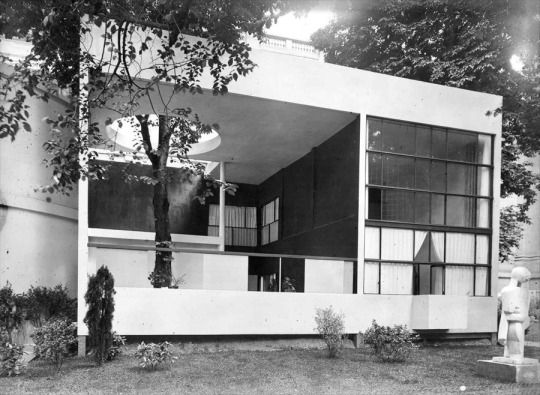
When thinking about Le Corbusier legacy I reflect back on buildings I often see and apply his 5 points. When thinking about buildings on campus, Sandburg comes to mind. Sandburg has roof top gardens and many of the dorms include windows that span across the whole room. The union also has Le Corbusier elements, such as columns and top to bottom windows. It takes a lot of light and is almost all concrete. All together La Corbusier has a lot more influence than I originally thought.
0 notes
Text
Week 5
In lecture on Tuesday we talked about Frank Lloyd Wright’s Larkin building from 1903. The building has an opening in the middle where there’s workers and it is a literal showing of the bottom to the top. Workers at the bottom and as they look up the more important the jobs become. One example of Frank Lloyd Wright’s design influence in my life is my Unitarian Universalist church in Madison. It was designed by Frank around the 1950s. I’ve grown up looking at the red floors and beamless building. Done a lot of learning and growing up in that building. Since I am not currently in Madison, I am not at this building regularly like I am used to. I attached a picture of me and my friends from a couple years ago. It shows of the extraordinary windows. I also would go on the roof tours the church hold. Some of the roof is now a garden.
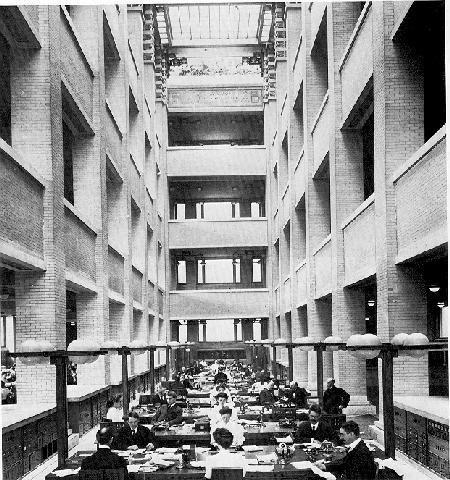
Frank Lloyd Wright, Larkin Building, 1903
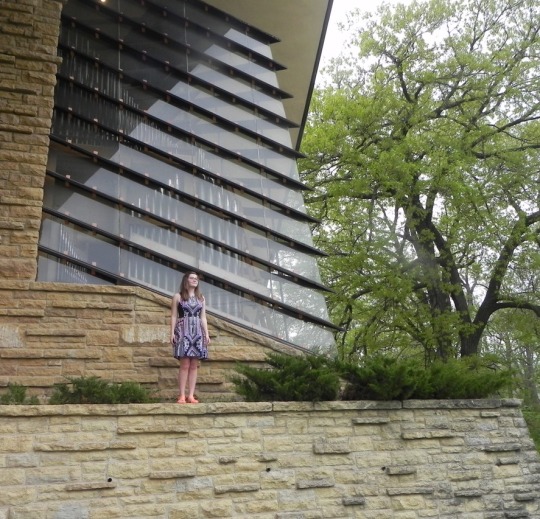
Frank Lloyd Wright, First Unitarian Society
The second example of design is the piece Panby Josef Sattler from 1895. The title suggests the piece is referencing the Greek god pan who was a half man half goat. According to a new history pan was associated with, “creativity, music, and poetry, as well with Dionysian sexuality and visionary nightmares” (93). I enjoy the color palette of the piece. Overall the piece reminds me of album art. Mostly I connect it because of the overall layout/composition and text. The album art I chose to compare this to is Mt. Joys self titled album from 2018. The cover art is very whimsical and mythological. It has a color full but muted pallet similar to Pans in some aspects. I listen to music everyday so I think it’s investing to look at the actual album art instead of the main musical art. The two can go hand in hand.
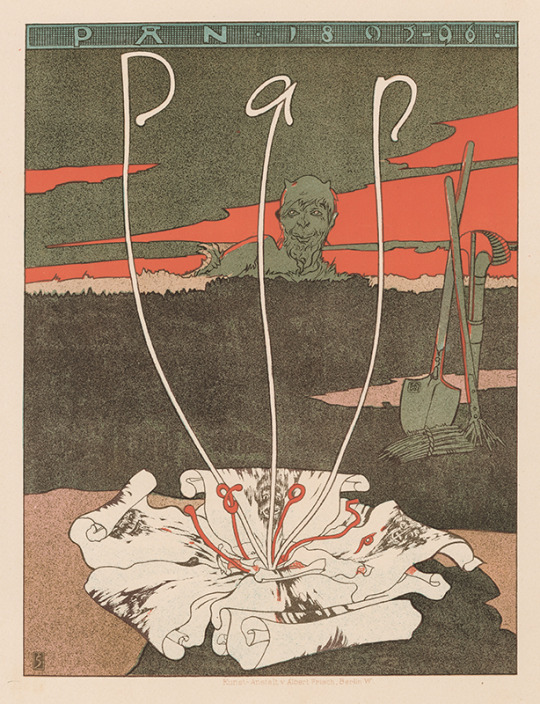
Josef Satter, Pan, 1895
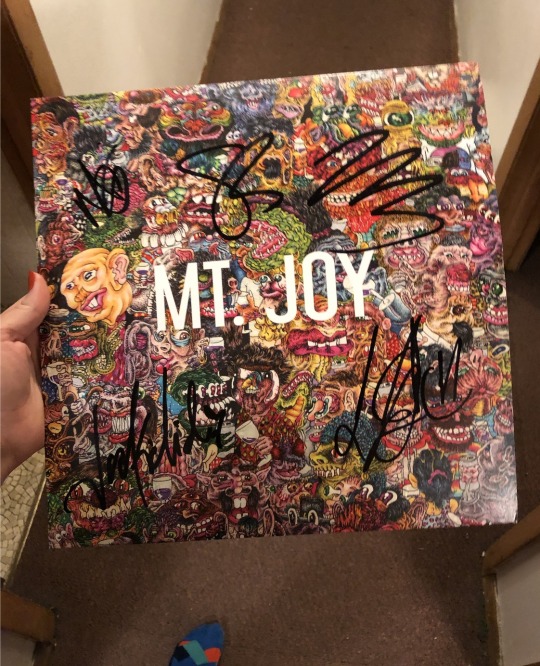
Mt. Joy, 2018
0 notes
Text
Journal entry 4!
Decolonization originally meant a state withdrawing from a former colony. A modern take on the meaning is changing the way we think. Many perspectives from the article “What Does It Mean to Decolonize Design?” all came to the same thought that western culture prevents our abilities to weave in different perspectives and standards of doing things. One of the members of the research group Decolonising Design, Danah Abdulla, said “decoloniality is about shattering the familiar.” She says that design today “does not disrupt the status quo, it does not disorder the established order.”
Now knowing the definition lets thinking about what designers, educators and critics can do to decolonize design. First off, they need to “shatter the familiar”, a phrase brought up in the article. Designers, educators and critics should start rethinking their audiences needs and who they are targeting. They should ask themselves questions about different diverse audiences, like how different groups of people are going to connect with what you are designing. The article stated, “An aspect of decoloniality is questioning how solutions might be experienced in someone else’s shoes.”. So, I think all it really is, is taking a step back from your creation and brain storm the audience this could affect and then how to either broaden it or step out of the normal template. The article also brought up even changing small things like typeface. Where many designers chose the same one over and over because it’s a classic. It’s also important for educators to decolonize. Often the way the teaching system is set up is extremely outdated or not inclusive. I think there’s many changes the education system needs to change, one being adjusting to the current century. If teachers decolonized for certain subjects, I feel they could connect with a much wider net in their class rooms. Overal whatever field someone is in its always important to take a step back and observe and change things up.
0 notes
Text
Post 3
I define design as a way to show an idea or concept in a different way. It can help people understand Ikea instructions or how to get around the airport. Design is a functional tool that is an important step in innovation. When design thinking for products you ask the questions, what do people need and how can I fix. An early approach to design thinking was from Edison, “a methodology that imbues the full spectrum of innovation activities with a human-centered design ethos.” (Brown. Pg 86). One example in my life is the electric scooters. I have seen them all over Milwaukee lately. These are similar to the bike example in the article. There are Limes, Spin, and Birds. It shows they have good spread and marketing because I was able to name all of those off the top of my head. Spin for example has seemingly 5 minutes free but when you download and open the app you have to put 10 dollars onto your account. I think designs can be successful when it’s a new way of going about something, that involves the culture and community.
Looking back at the “Deep Dive” video I found the overall theme finding new and unique probable solving strategies. Their team thought through different problems that need a solution. From there they came up with as many answers to the problems as possible. Their overall saying was that everyone is equal and everyone can bring something to the table.
0 notes
Text
A bit about me
Heyo, my name is Ruby Wilson. I am 19 and a sophomore at uwm. I am from good ol’ Madison, Wisconsin and love to create. I plan to be a dvc major but also interested in fibers and women studies. Growing up I have been surrounded by design. Both my parents are in creative fields so instead of regular art on the walls growing up there were infographics. I took this class because I would love to learn more about design and have a better understanding of its history.
Since my father is a graphic designer I have had a love for photoshop and illustrator since I was young. I also like other medias but I would say digital is my go to. I think I am most inspired by memories and experiences from my life. I enjoy tying in different mediums to create something larger.
I often do look at designs when buying products and comparing companies. I feel like that can apply for decisions like what sheets I'll buy But I also pay attention when buying things like soap or a candle. I feel when many people shop for soap they are focused on the smell more. I often look at the over all aesthetic, which I find amusing when thinking about soap or everyday products.
1 note
·
View note